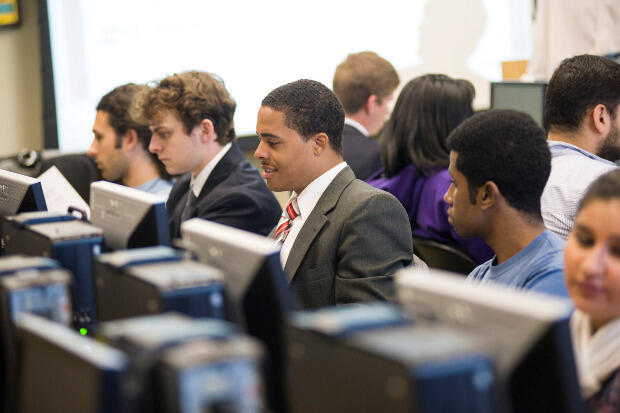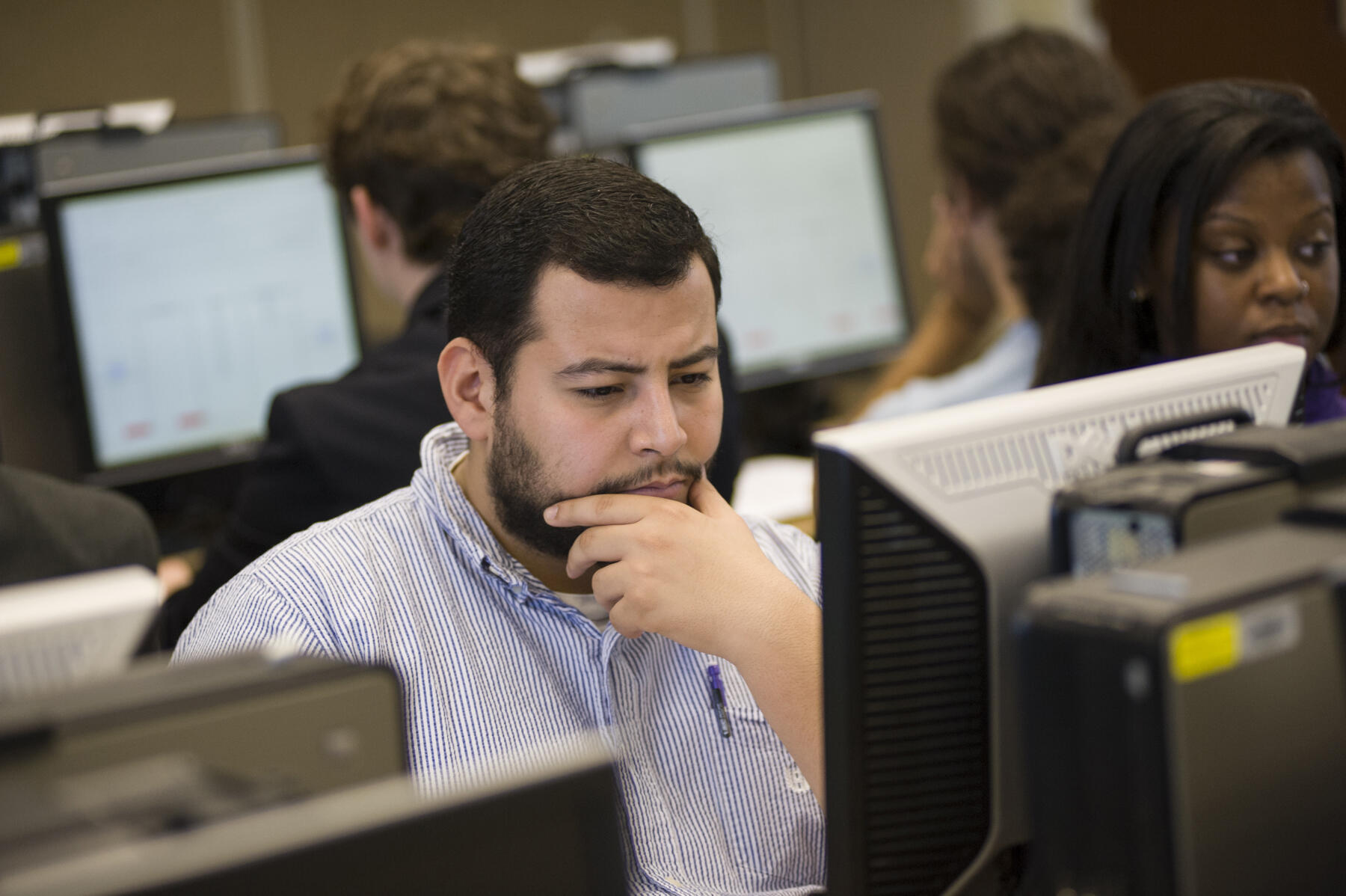
Oct. 29, 2014
The dictator games
Share this story
Suppose that someone trustworthy gave you $20, paired you with an anonymous person, and then said, “You have three choices: You can give all $20 to this other person (who doesn’t know you exist), you can share some of it and keep some for yourself, or you can keep it all for yourself. It’s up to you.”
What do you think most people in this situation would do? More importantly, what do you think motivates their decisions?
Called a “dictator game,” because one player has all the power while the other is merely a passive “recipient,” this abstract and seemingly improbable scenario has long been used by economists to study the behaviors and preferences of decision-makers in a controlled setting.
And because it mirrors the power differential between philanthropists and charities, the dictator game is at the heart of research on philanthropy being conducted by three economists in the Virginia Commonwealth University School of Business.
To test the external validity of this research — that is, whether their lab results are reflected in naturally occurring environments — professors Edward Millner, Ph.D., and Laura Razzolini, Ph.D., and associate professor Oleg Korenok, Ph.D., have received a $17,500 Small Grant from the Science of Philanthropy Initiative, based at the University of Chicago and itself funded by a grant from The John Templeton Foundation.
The best way to understand what Millner, Razzolini and Korenok are doing today is to work your way up to it.
Start with someone else’s research: Years ago, a study compared matched donations, in which you give a dollar and another benefactor matches it, with subsidized donations, in which you give a dollar and another benefactor returns 50 cents to you. The results of that study showed that matched giving was greater than subsidized giving, which got Millner thinking about the dictator game and the question of whether matching and subsidies are equivalent in the dictator’s mind.
In particular, Millner was fascinated by what seemed like an odd result. In testing scenarios when the initial amounts, or “endowments,” held by the dictator and the recipient were equal, 25 percent of dictators behaved in ways that made the distribution unequal — to their apparent disadvantage. This suggested, and was consistent with, something economists call “warm-glow giving,” the positive emotional feeling people get from helping others, which Millner says he always thought was “hooey.”
“So then we conducted an experiment that tested if warm glow organizes the data well, and the answer is yes,” Millner said. “I’m a believer now. Warm glow works; it’s out there.”
I’m a believer now. Warm glow works; it’s out there.
At this point, Millner and Razzolini began thinking about how to design the range of choices so that dictators, i.e., philanthropists, would give more. And it was the academic work of others that helped them do this.
Two similar studies began with a game in which the dictator was given $10 and told she could pass up to $5 to a recipient who had $5 already. The study then widened the dictator’s choices by allowing her to take the recipient’s $5. In the end, the average contribution fell when the option to take was available.
Many consider this result to be unexplainable and to violate the fundamental principles of economics, Millner said.
“We looked at it and said, ‘No, it really doesn’t,’” he recalled. “If warm glow matters … and the dictator views the payoff space not by what he or she can give but by the range of payoff possibilities that exist, then the taking option expands those payoff possibilities and it’s going to shift what the optimal behavior is. And if not taking is viewed as giving, then shifting that payoff space in favor of the dictator should reduce the payoff to the recipient.”
Millner, Razzolini and Korenok then tried to determine for themselves if not taking is the same as giving, thinking that, if it is, warm glow (also known as “impure altruism”) must explain the results. Their research produced a paper titled “Taking, Giving, and Impure Altruism in Dictator Games,” which was published in the September 2014 issue of the journal Experimental Economics.
What they found made things even more interesting: not taking is not the same as giving. Essentially, people take less than they give. In the context of the game, the recipient fared much better when the dictator was taking than when he was giving.
This result compelled Millner and Razzolini to wonder how their research might transfer to, and be useful in, the naturally occurring environments outside of their laboratories. Could a charity frame a donation as though you’ve already given the money and, thereby, put you in the position of having to take rather than give? Could this framing increase donations to a charity?

With the help of the Small Grant they have received from the Science of Philanthropy Initiative, Millner, Razzolini and Korenok hope to answer these questions by pursuing their research in three ways.
First, they will conduct new laboratory experiments that involve real charities rather than simulated, individual recipients. This testing will verify whether the move from person-to-person to person-to-charity makes any difference in the lab.
Second, they have partnered with PlanG, a Richmond-based company that facilitates and organizes individual philanthropy, to conduct a field experiment, funded in part by the Small Grant. In this experiment, PlanG’s website will, on a random basis, present users with differently framed options. In addition to the usual method of entering a desired donation, the site will show some users a suggested amount from which they must subtract to arrive at a preferred amount.
As Razzolini points out, she and Millner are not the first to introduce a suggested donation; the novelty of their approach is to force the user to decide to take something away. Millner and Razzolini hypothesize that this “taking” mechanism will generate greater contributions to charities than the “giving” one.
Finally, with a second experiment in the lab, Millner and Razzolini will try to answer a subtler question: Given the demonstrated difference between taking and giving, what is the strength of individual aversion to taking? How much will a dictator give up so that he doesn’t have to take?
“Our results are showing that taking aversion is prevalent and strong,” Millner said. “This is important for the philanthropy because, if I have this taking frame and someone doesn’t like it, they don’t have to play the game.”
The trick is finding a way to maximize taking aversion without turning people off. It is the sweet spot that the field experiment aims to define.
“Do more people opt out of the taking frame than the giving frame?” Millner asked. “If they continue, do they in fact contribute more in the taking frame than the giving frame? What’s the net impact?”
The idea for this experiment began with a lucky meeting. Millner wanted a speaker for his MBA class, and that speaker ended up being one of PlanG’s founders, Melina Davis-Martin, a former VCU MBA student. Their conversations led to a collaboration that Millner embraces as a form of community engagement.
“I’m an academic person,” Millner explained, “so just determining whether or not warm glow exists in the lab I find to be an intellectually stimulating exercise. … [But] this is a new dimension. It’s really fun to do something that’s an extension of what I’m already doing and that takes it a step further. And with the university’s big push for community engagement, I’m happy to be able to do that in a way that dovetails with my own intellectual interests.”
Subscribe for free to the weekly VCU News email newsletter at http://newsletter.news.vcu.edu/ and receive a selection of stories, videos, photos, news clips and event listings in your inbox every Thursday. VCU students, faculty and staff automatically receive the newsletter. To learn more about research taking place at VCU, subscribe to its research blog, Across the Spectrum at http://www.spectrum.vcu.edu/
Subscribe to VCU News
Subscribe to VCU News at newsletter.vcu.edu and receive a selection of stories, videos, photos, news clips and event listings in your inbox.






